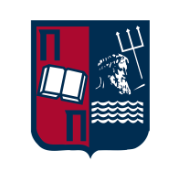Development of Telecommunication Systems |
|
|---|---|
| Professors | Apostolos Meliones |
| Course category | OPT/T&N |
| Course ID | DS-313 |
| Credits | 5 |
| Lecture hours | 3 hours |
| Lab hours | 2 hours |
| Digital resources | View on Aristarchus (Open e-Class) |
Learning Outcomes
The aim of this course is to familiarize students with best practices for the design and implementation of modern innovative telecom systems and applications. The main topics discussed include systematic multi-criteria requirement analysis, transformation of user requirements to architectural specifications and system functionality, design optimization for high performance and QoS, installation and deployment procedures, as well as system validation against initial requirements and specifications. The presented methodologies derive analytically from real case studies of innovative telecommunication systems and applications with extremely high added value and impact (e.g. the European Space Agency SATWAYS project in the field of Air Traffic Control). Students will further gain significant practical experience in the design and implementation of innovative telecommunication systems through exercise solving and development of small projects. Last but not least, the course presents an in-depth commercial feasibility analysis of the developed systems.
At the end of the course, students will be equipped with advanced expert and analytical knowledge for the consistent design, development and validation of innovative embedded telecommunication systems (see Course Content) meeting strict quality requirements regarding the provided telecommunication services. The obtained knowledge will allow the critical and analytical deepening as well as performing innovative research in the broad scientific domain of embedded telecommunication systems and applications.
Students will be capable of:
- transforming user requirements to telecommunication systems architectural specifications and functionality.
- specifying prototype embedded telecommunication systems, including their architectural layering (hardware, embedded software, software), according to specific QoS requirements for the provided services.
- designing and specifying modern voice communication systems for next generation networks.
- designing QoS models involving the end-to-end telecommunication transmission path from service provisioning to the end user, as well as extracting performance requirements and specifications for segments of the end-to-end transmission path.
- optimizing the design of telecommunication systems for high performance and QoS.
- explaining the details of the E-model adaptation and simplification of the discrete noise and advantage parameters in the demanding field of radio voice communications. The E-model (ITU-T Rec. G.107) is a transmission planning tool that provides a prediction of the expected voice quality, as perceived by a typical telephone user, for a complete end-to-end (i.e. mouth-to-ear) telephone connection under conversational conditions.
- exploiting and solving the adapted voice QoS model for extracting system performance design parameters (e.g. for selecting appropriate voice codecs assuming a limited end-to-end delay and the constant values of delay parameters along the telecommunication transmission path segments).
- compiling detailed plans for technical validation of system deliverables against the initial user requirements and system specifications.
- analyzing the satellite link budget for the provisioning of telecommunication services and extracting requirements regarding the underlying telecommunication system.
- analyzing the installation, deployment and operational details of the developed systems.
- compiling workplans, work packages, time schedules, lists of technical deliverables and reports, critical paths, milestones and sample budgets involving R&D projects that design and develop innovative embedded telecommunication systems.
- performing indicative techno-economic studies and commercial feasibility analysis regarding innovative embedded telecommunication systems, including a SWOT analysis (strengths, weaknesses, opportunities, threats).
Course Contents
- Exemplary Innovative telecommunication systems and applications with high added value and impact.
- Systematic multi-criteria requirement analysis.
- Transformation of user requirements to architectural specifications and system functionality.
- Design optimization for high performance and QoS.
- Adaptation and validation of the E-model in the radio communications use case, including satellite transmission. The E-model (ITU-T Rec. G.107) is a transmission planning tool that provides a prediction of the expected voice quality, as perceived by a typical telephone user, for a complete end-to-end (i.e. mouth-to-ear) telephone connection under conversational conditions.
- Exploitation of the voice QoS model for extracting system performance design parameters (e.g. for selecting appropriate voice codecs assuming a limited end-to-end delay and the constant values of delay parameters along the telecommunication transmission path segments).
- Voice communications based on the NGN (Next Generation Network) standard.
- Installation procedures and relevant issues.
- System validation against initial requirements and specifications.
- Commercial feasibility analysis.
- Exercises and programming projects.
Recommended Readings
- Apostolacos S. & Meliones Α. (2014): Satellite IP Radio Communications in Air Traffic Control: Design, Implementation and Evaluation of Telecommunication Systems (in Greek).
- S. Apostolacos, A. Meliones, S. Badessi, G. Stassinopoulos, “Adaptation of the E-model for satellite internet protocol radio calls in Air Traffic Control”, IEEE Transactions on Aerospace and Electronic Systems, 50(1), January 2015.
- S. Apostolacos, M. Manousos, A. Meliones, D. Kavadas, G. Lykakis, A. Manousarides, M. Kardaris, K. Simeakis, Design and Implementation of a Solution for the Provisioning of Converged Remote Tower and Facility Management Services over Satellite IP for Greek Heliports, IEEE Communications Magazine, 46(8), August 2008.

